Fort Kochi - Kathakali dance - Backwaters - Alleppey - Ferry Ride - Varkala - Kovalam - Fishermen - Trivandrum
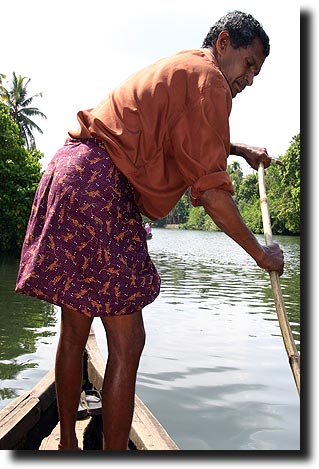
Our family went on two separate trips into the backwaters. Our first trip was in a hand-poled canoe that only fit 4 other people. We left Fort Kochi after our visit and entered the backwaters about half-way between it and Alleppey.
|
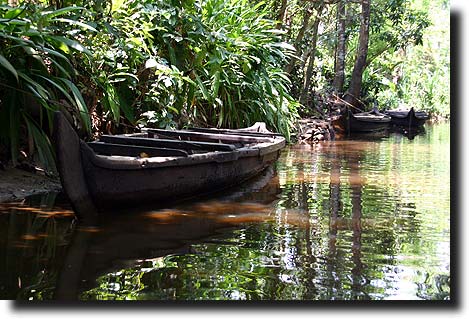
The Keralan backwaters wind and meander for some 900 kilometers along the western coast of India. They are networks of natural rivers, shallow lakes and dredged canals that all connect to provide transportation, livelihood and beauty for the folks who live there.
|
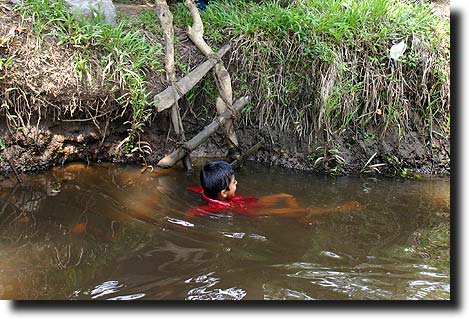
We could touch the banks with our hands and had wonderful up close views of foliage, animals, fish, and (not so wonderful but impossible to avoid in India) garbage. Along our route, we saw families and their homes, with people going about their daily duties, like washing - or pooping - in the water
|
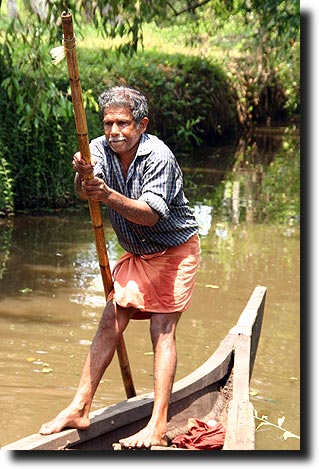
Our canoe was a wood dug out affair with slats of wood held together with coir (coconut twine). There were two men that poled - one in front and one in back - as the water never got deeper than their poles (about 5 feet). We launched from a fairly wide river, but immediately turned off to a canal that was never more than a few yards across.
|
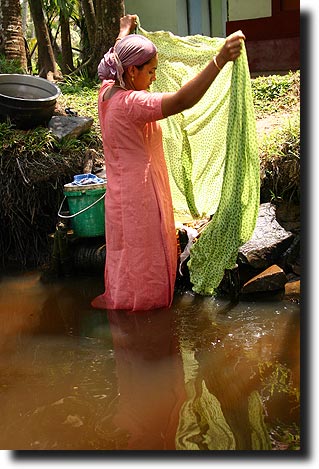 |
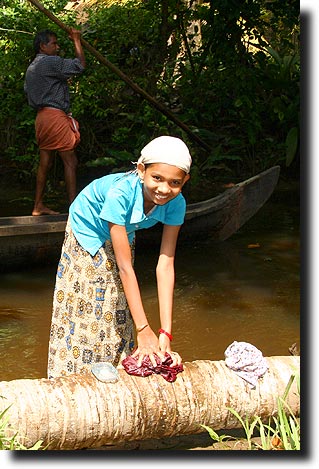 |
 |
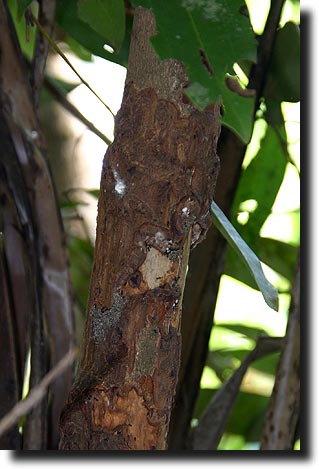 |
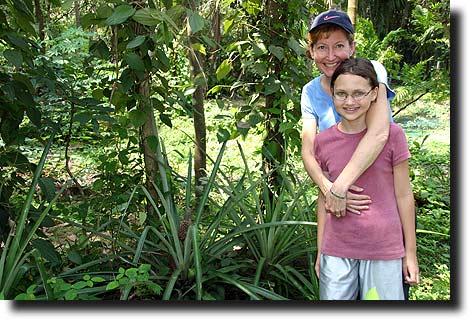
We stopped at a small family-run spice plantation and saw a variety of local spices being grown for local and family consumption. Large scale plantations are further inland in Kerala. Susan's favorite was the cinnamon tree. Our guide cut a strip off the trunk and she ate it right there and then - moist and tasty! |
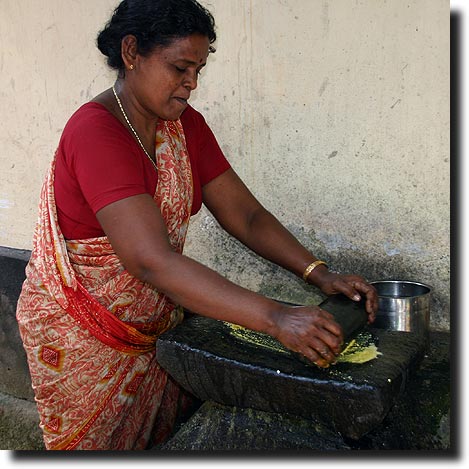 |
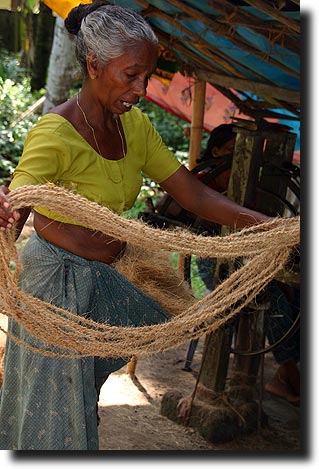 |
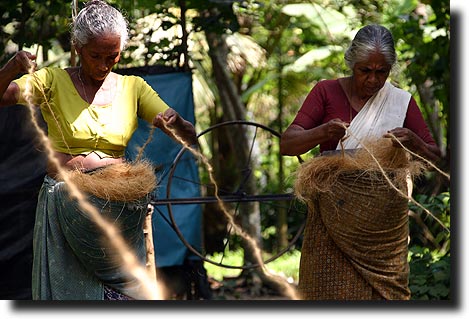 |
|
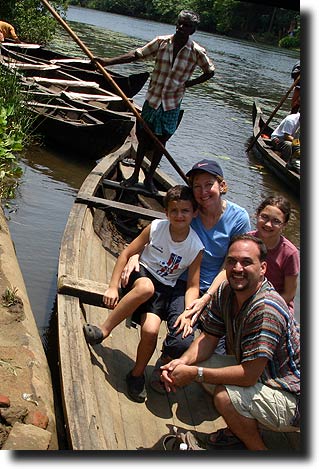 |
|
|